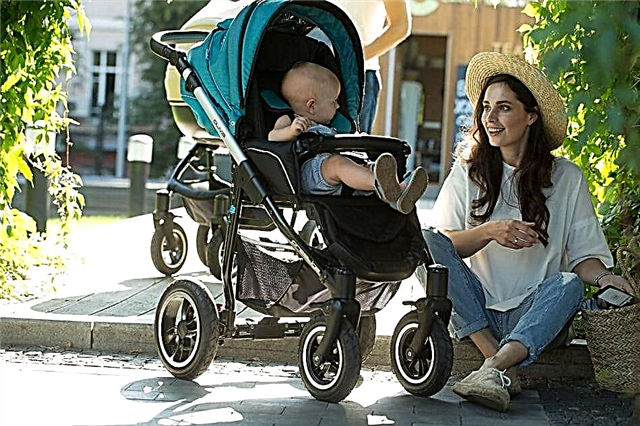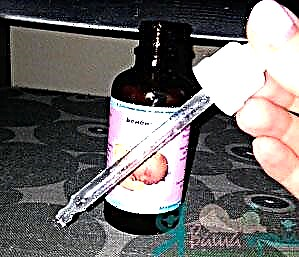
A child who has reached school age and has never had otitis media is a rarity. This inflammatory disease of the hearing organs is incredibly widespread in childhood.
The organ of hearing has three sections, respectively, at the location of the inflammatory process, internal, external and middle forms of otitis media are distinguished. The latter is the most common.

About the disease
Otitis media, or otitis media of the middle ear, is the disease most often encountered by pediatricians and ENT doctors. Statistics say that at least one episode of otitis media occurs in 80% of children under the age of 5, and by the age of 8-9, such a diagnosis is indicated in the medical records of 95% of children.
Otitis media is quite insidious: only at first glance it is harmless and easily defeated even at home. In fact, it can become recurrent, and sometimes it can lead to unpleasant consequences, complicated by facial paralysis, meningitis, and abscess.
In almost a quarter of cases, otitis media, which was transferred in childhood, becomes the cause of hearing loss in a more mature age up to the development of hearing loss.
Most often, otitis media starts in infants. This is due to the age-related characteristics of the anatomy of the hearing organs. Until about 3 years of age, the auditory tube is shorter compared to adults, it is wider in diameter. In this regard, liquid, bacteria, viruses can easily get from the nasopharynx into the middle section of the organ of hearing. This can happen when sniffing, when crying, when breastfeeding, with concomitant respiratory disease.
Inside the middle ear, there is a favorable environment for the rapid multiplication of microorganisms, and therefore the inflammation develops quickly. As you grow older, the auditory tube narrows, stretches and the frequency of otitis media decreases... Some adults never suffer from ear inflammation, but they did it more than once in childhood.


Types and reasons
The age-related features of the structure of the ears in children largely explain why the disease develops more often in childhood. But in order for the inflammation to begin, a trigger is needed - a provoking factor.
Otitis media in children is most often a complication of respiratory disease. It most often develops against the background of an acute viral infection, influenza, measles, scarlet fever.
During an acute infection in a child, for natural reasons, the amount of nasal mucus increases (this is a kind of body defense), and through the short and wide auditory tube, bacteria or viruses easily penetrate into the middle section of the hearing organs, where they cause a strong inflammatory process.
Quite often, otitis media develops in children with adenoiditis: their nasal breathing is disturbed by overgrown tonsils, there is no ventilation of the auditory tube, and in the absence of adequate ventilation, the environment for the reproduction of pathogens becomes very favorable. For the same reason, the disease begins in children with chronic rhinitis, sinusitis, sore throat or pharyngitis.
Kids are inquisitive and may well push a foreign small object into their ear and hide this fact. Gradually, mechanical inflammation develops in the middle ear. If, for some reason, the tympanic membrane that separates the outer ear from the middle is injured, then it is possible that pathogens will enter from the outside through the outer ear.
In the middle department of children's ears, pneumococci, hemophilic sticks, moraxella bacteria, hemolytic streptococcus and various fungi feel most "at ease". It is they who are most often found in laboratories when they analyze ear discharge in a child with otitis media.
Otitis media is different, it proceeds and is treated in this regard in different ways:
- Unilateral (most common) - only one ear is affected. By location, right-sided and left-sided otitis media are distinguished;
- Bilateral (it happens quite rarely) - both ears are affected;
- Acute - recently developed, just now. It is purulent (with the formation of pus in the middle ear), bullous (with the formation of bubbles) or catarrhal (non-purulent), allergic.
- Chronic - often repetitive. It can be exudative, purulent and adhesive.

An ENT doctor will help to establish the exact type of ear inflammation that has struck the child.
Symptoms and Signs
Otitis media, flowing in acute form, occurs in the vast majority of cases. It is not difficult to recognize its signs. The onset of the disease is accompanied by severe, sudden pain in the ear and an increase in body temperature. The thermometer can show up to 39 degrees and even higher.
In acute inflammation, hearing decreases (this is reversible if there are no complications), the child feels very bad in general - he has a headache, there are signs of intoxication. When turning the head, nodding, speaking, the pain in the ear increases markedly.
The pain subsides, the fever subsides and, in general, the condition improves markedly after the purulent or serous contents begin to exit through the perforation in the eardrum... So the middle section of the organ of hearing gets rid of the foreign substances accumulated there. At this stage, hearing loss, hum or tinnitus will persist. From the ear begins to "flow".
As soon as the ear discharge comes out, the tympanic membrane begins to recover, scar. When its integrity is fully restored, the ability to hear normally returns. The entire process from illness onset to recovery can take 2 to 4 weeks..
If episodes of ear inflammation are repeated in a particular baby several times a year, then they speak of recurrent otitis media, in which the risks of complications increase markedly. But such repeated attacks by themselves are always easier than acute otitis media - the pain is less pronounced.
If the otitis media is adhesive or exudative, then the child may not complain of pain at all - he may only have complaints of hearing loss and ear noise (tinnitus), while the decrease will be progressive.

The most difficult in therapy is considered to be chronic purulent otitis media, in which the eardrum does not have time to scar and the discharge of pus from the ear becomes periodic or constant. With this form of inflammation, hearing loss progresses, the cure of which is almost impossible. The temperature rises only during an exacerbation.
Signs in infants
A child of a conscious age may well show and explain to parents and the doctor exactly where he hurts. And this simplifies the task of determining otitis media. With infants, everything is somewhat more complicated. The mother will have to guess that the child has an inflamed middle ear on her own, carefully observing the baby's behavior.
The baby reacts to a sharp pain not just by crying, but by an anguished cry, and the child begins to scream sharply, suddenly, as soon as there is a shooting sharp pain in the ear. Neither carrying on hands, nor motion sickness, nor bright toys, which a few hours ago were so interested in him, helps to calm the baby.
The baby is screaming not only from pain, but also from hunger, because he cannot eat fully: when sucking on the breast or nipple, the pain in the middle section of the ear increases, which forces him to quit eating and resume crying. Almost the same thing happens with sleep patterns. Even if the baby falls asleep, then the lull does not last long - literally until the next attack of pain in the ear. But for such a cry, an infant may have other reasons, and the pain may be in another part of the body.
To make sure that it is the ears that hurt, you need to lay the baby on a flat surface and gently press with the index finger on the small cartilage located at the entrance to the ear from the side of the face. It is called a tragus. First, an adult presses on the right tragus, then on the left.
If the case is in otitis media, then with pressure the pain intensifies, and the baby makes it known by throwing up his arms, legs, and the resumption of a heart-rending cry. In order not to be mistaken, it is best to carry out such testing in moments of "calm", when the child has calmed down a little and is tired.
Children after six months have more opportunities to demonstrate pain in their arsenal. Such babies with otitis media begin not only to worry and cry, but also to fiddle with a sore ear with a pen, close it with a palm. When such a behavioral reaction occurs, you need to measure the temperature, conduct a test with pressure on the tragus.

Most often, infants' ears hurt in the evenings and at night. Nobody knows why, but it is. Therefore, hearing a shrill cry in the middle of the night, you should definitely conduct a tragus test in order to immediately exclude or suspect otitis media.
Why is the disease dangerous?
Otitis media is dangerous for its complications, the likelihood of which increases with untimely or incorrect treatment. The later parents start treating otitis media, the higher the likelihood that it will not do without complications... Also, the likelihood of negative consequences increases with a severe course of the disease, even if the treatment began on time.
The inflammatory process in the middle ear is dangerous primarily because it easily passes to the inner ear, captures the labyrinth, which leads to disruption of the vestibular apparatus, dizziness, the development of persistent ear tinnitus (noise), nausea and a strong decrease in auditory function up to complete loss hearing.
With complicated otitis media, the temporal bone and facial nerve may be affected.
Do not forget that the middle ear is in close proximity to the brain, and therefore an inflammatory process of the meninges may develop.

What to do?
For an infant or small child, call a doctor. Older children should immediately go to the ENT appointment. The ears are examined using a special device - an otoscope. This makes it possible to find out if there is pus in the middle ear, how severe the inflammatory process is. The doctor will also check to see if the child's eardrum is intact.
In the presence of pus, the ear discharge is sent to the laboratory for bacteriological examination, which allows you to establish the exact type of the causative agent of inflammation and its resistance to antibiotics. This is important for the correct treatment.
An x-ray of the temporal bones may be recommended. If an objective cause of inflammation is not found, the clinical recommendations of the Ministry of Health strongly prescribe computed tomography of the temporal bones.
If otitis media recurs often and the doctor assumes that the disease has become chronic, it is imperative to conduct a hearing test using audiometry.

How can you help with acute pain?
Given that pain appears suddenly, parents are interested in how they can help the child before being examined by a doctor. We hasten to disappoint: there is no medicine that can be given to a child with suspected otitis media before a doctor examines him.
Drops in the ears with anesthetic or anti-inflammatory effect are a good and necessary thing, but it is permissible to drip them only when the eardrum is intact, not perforated. Unfortunately, at home, it is impossible in principle to assess how intact it is, and therefore it is necessary to refrain from burying in the ears.
Having established which ear hurts, you can take the child in your arms and press the sore ear to you - body heat will slightly reduce the intensity of the pain. Before the arrival of the doctor, this measure may be enough.
Warming and other compresses are also not a method of providing first aid., especially since warming intensifies purulent inflammatory processes, and it is also impossible to guess about the presence or absence of suppuration in the ear.
From medicines only antipyretics are permissible if the fever exceeds 38.0 degrees... It is better to give a remedy, the main substance of which is paracetamol.
Instillation of nasal vasoconstrictor drugs into the nose will help to slightly reduce the pain in the ear before examination - "Nazivin", for example, partially reduces the swelling of the auditory tube.

Treatment
In the acute form, drops are most often prescribed in the ears based on phenazone and lidocaine - they relieve pain and reduce inflammation. If there is pus, then antibiotic drops are recommended. With an allergic form of otitis media, antiallergic treatment is prescribed with the use of an antihistamine.
If the otitis media is purulent, but the eardrum under the pressure of purulent masses from the inside is in no hurry to perforate, the membrane is punctured to facilitate the outflow of pus. This procedure is called tympanic membrane paracentesis. After cleaning the cavity, it is washed with medications in a medical office.
After the acute inflammatory period is over, pneumomassage of the tympanic membrane is recommended to improve hearing, physiotherapy, blowing out the ears.
It is very important to treat concomitant ENT diseases such as rhinitis or adenoids. If they are present, even timely treatment of acute otitis media increases the likelihood that the ear ailment will become chronic, and the child will be partially or completely deaf.





